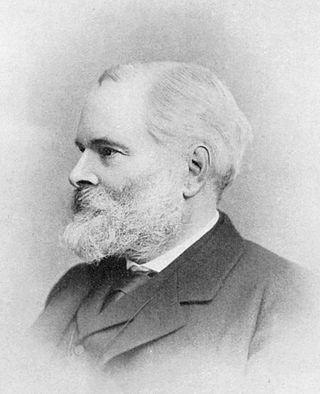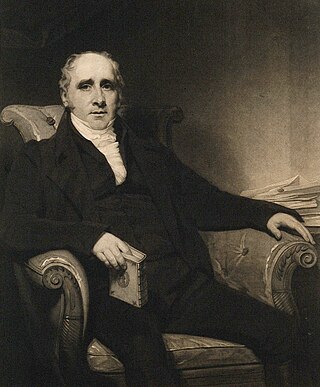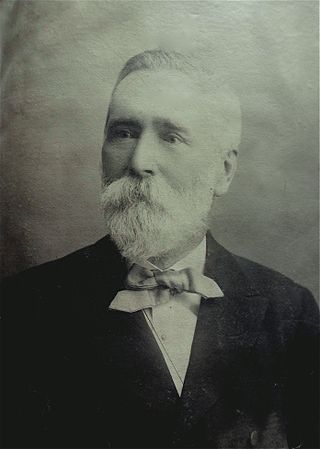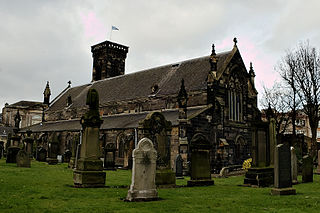
Alexander Crum Brown FRSE FRS was a Scottish organic chemist. Alexander Crum Brown Road in Edinburgh's King's Buildings complex is named after him.

John Muirhead Macfarlane FRSE LLD was a Scottish botanist.

Thomas Charles Hope was a Scottish physician, chemist and lecturer. He proved the existence of the element strontium, and gave his name to Hope's Experiment, which shows that water reaches its maximum density at 4 °C (39 °F).
Sir James Johnston Dobbie, FRS FRSE FIC FCS was known for the isolation, chemical structure, and physical properties of alkaloids. He isolated hydroxycodeine from opium and synthesized diphenylene. He carried out UV-VIS spectra of gaseous main group elements and organic compounds.

George Wilson PRSSA FRSE was a 19th-century Scottish chemist and author. He was Regius Professor of Technology at the University of Edinburgh, and the first director of the Industrial Museum of Scotland.

Sir James Walker FRS FRSE FCS LLD was a Scottish chemist. He worked mainly on inorganic and physical chemistry. His major contribution was in the study of chemical reaction kinetics based on a study of the reactions converting ammonium cyanate to urea which was published in 1895 along with Frederick J. Hambly (1878-1960).
Douglas Alston Gilchrist FRSE FHAS (1860-1927) was a Scottish-born professor of agriculture; author and government advisor.
The Botanical Society of Scotland (BSS) is the national learned society for botanists of Scotland. The Society's aims are to advance knowledge and appreciation of flowering and cryptogamic plants, algae and fungi. The Society's activities include lectures, symposia, field excursions, field projects and an annual Scottish Botanist's Conference, held jointly with the Botanical Society of Britain and Ireland for exchange of information between botanists working in different areas. Its publications include a twice-yearly newsletter, BSS News, and a scientific journal, Plant Ecology & Diversity. The society is closely linked to the Royal Botanic Garden Edinburgh and the Scottish universities.

Henry Stephens FRSE was a 19th-century Scottish farmer, meteorologist and agricultural author. His multi-volume Book of the Farm was a standard text for some seventy years after its first edition of 1844.
William Dittmar FRS FRSE LLD was a German-born scientist renowned as a chemical analyst. He was based largely in Scotland. He did much analytical work on the findings from the Challenger expedition.
Dr Leonard Dobbin FRSE was a chemist and author on the history of chemistry and several chemistry textbooks. He was known as a modest and lovable man.

Stevenson Macadam was a Scottish scientist, analytical chemist, lecturer, and academic author.
John MacKay Bernard of Dunsinnan and Buttergask FRSE was a Scottish brewer, philanthropist and noted amateur meteorologist. He was President of the Scottish Meteorological Society 1912 to 1915.
Robert James Douglas Graham FRSE (1884–1950) was a Scottish botanist.

James Grant FRSE DD DCL was a Scottish minister. Combining his religious skills with business skills he was also Director of Scottish Widows for 50 years and Moderator of the General Assembly of the Church of Scotland in 1854. During his period as Moderator he was styled as Right Rev James Grant and thereafter as Very Rev James Grant.
Alexander Lauder FRSE FIC (1870–1943) was a Scottish agricultural chemist.

Dr Ralph Stockman MD LLD FRCPE FRSE was a Scottish Professor of Materia Medica and Therapeutics at the University of Glasgow. He was an expert on iron deficiency anaemia.

Sir Robert Patrick Wright (1857–1938) was a Scottish farmer and agriculturalist. He was Chairman of the Scottish Board of Agriculture and was knighted by King George V on 6 July 1911.
Charles Morton Aikman FRSE FIC FCS was a 19th century Scottish agricultural chemist and scientific author.










